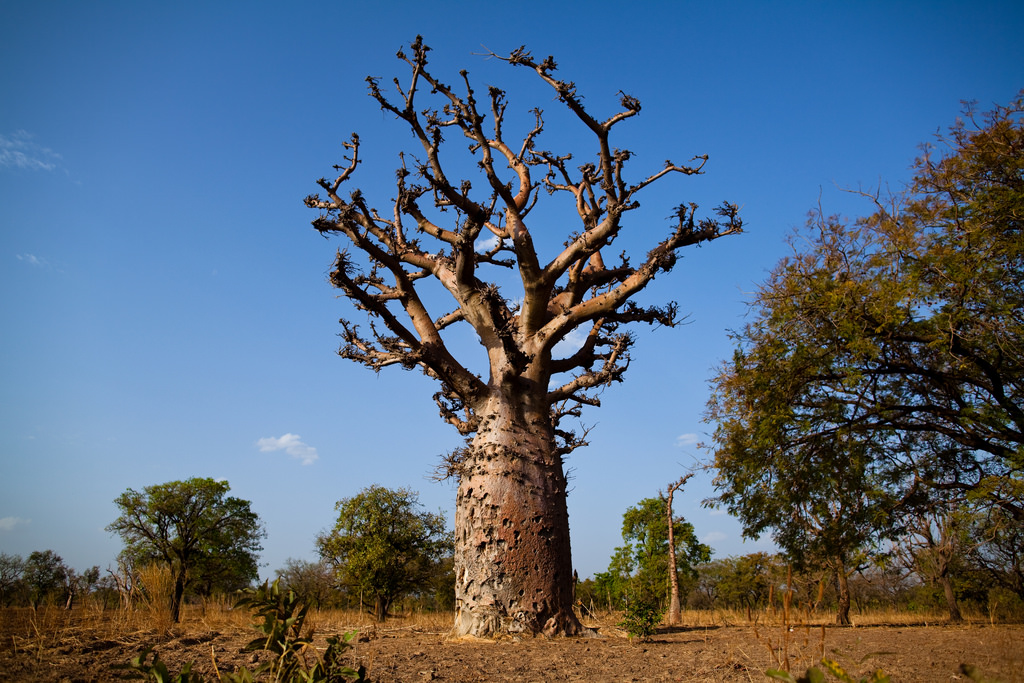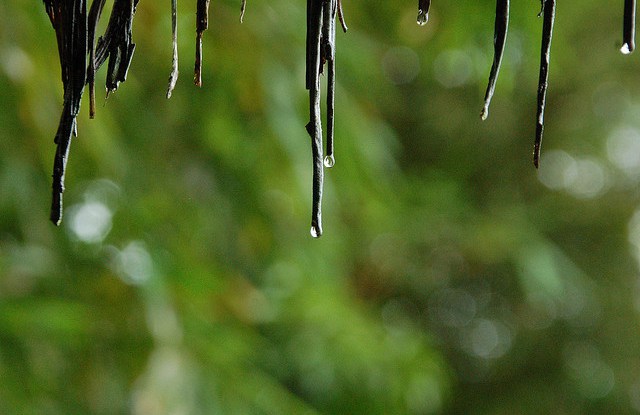Marking World Water Day on 22 March, we are highlighting the essential links between forests and water. For more on this topic, check in to the live stream of the virtual symposium ‘Cool insights for a hot world’, hosted on 21-22 March 2017 by the CGIAR Research Program on Forests, Trees and Agroforestry (FTA).
New research has revealed a multitude of ways in which forests create rain and cool local climates, urging a closer look at forests’ capabilities beyond just climate change mitigation.
In a recent paper, 22 researchers from as many diverse institutions, call for a paradigm shift in the way the international community views forests and trees, from a carbon-centric model to one that recognizes their importance in cross-continental water cycles, as well as at the local scale.
“People are used to hearing the idea that forests are really important, but we now have a much deeper insight into why the loss of forest cover can have such a huge impact on water availability- especially for people downwind,” says study co-author Douglas Sheil from the Norwegian University of Life Sciences.
“The links are so much stronger than people previously thought. And if policymakers and land use planners are not aware of that, that’s a huge shortfall in decision making.”
So what exactly do we now know about forests and water?
Forests help raindrops form

Every day, forests replenish the supply of water vapour in the atmosphere. They draw up water through their roots, and release it from their leaves via transpiration. Along with evaporation from oceans and other water bodies, this is what drives the water cycle and charges the atmosphere with water vapor.
“The process is so powerful that it can be seen from space,” says co-author David Gaveau from the Center for International Forestry Research (CIFOR). “If you look at satellite images [above] of the Amazon, central Africa, or Southeast Asia, you can see these flashes of water vapor bubbling up.”
“We use the phrase ‘lungs of the planet’ all the time, but here you can really see this natural rhythm of forests actually breathing water vapor into the atmosphere.”
Recent studies have shown that as much as 70 percent of the atmospheric moisture generated over land areas comes from plants (as opposed to evaporation from lakes or rivers) – much more than previously thought.
In addition, new research has revealed that forests also play a key role in water vapor actually forming clouds and then falling as rain.
Trees emit aerosols that contain tiny biological particles – fungal spores, pollen, microorganisms and general biological debris – that are swept up into the atmosphere. Rain can only fall when atmospheric water condensates into droplets, and these tiny particles make that easier by providing surfaces for the water to condense onto.
Some of these plant-based microorganisms even help water molecules to freeze at higher temperatures – a crucial step for cloud formation in temperate zones.
“These particles are incredibly important for the occurrence of rainfall in the first place,” says the study’s lead author David Ellison, from Ellison Consulting and the Swedish University of Agricultural Sciences. “If they’re missing, rainfall might not occur, or will occur less frequently.”
Trees can actually increase local water availability
Though the accepted orthodoxy is that trees remove water from catchments, and that planting trees reduces water availability for local people, another “game-changing” study has turned that assumption on its head.
“In a water-short environment, where people are digging their wells ever deeper because the groundwater is disappearing, it was believed that there’s a trade-off between planting trees and the water people need,” says Sheil. “A lot of donors have avoided supporting tree-planting in arid parts of the world because they see this as a conflict.”
But research conducted by Ulrik Ilstedt from the Swedish University of Agricultural Sciences, one of the study’s co-authors, has shown that in dry landscapes, trees (at some densities) can actually increase the availability of water, by assisting with groundwater recharge.
“What Ulrik has showed is that in the drylands of Africa, if you start planting trees you get an initial rise in the amount water in the landscape, because the trees actually use less water than the amount of additional water they allow to infiltrate through the soil,” Sheil says.
Tree roots – and the animals they attract like ants, termites and worms – help to create holes in the soil for the water to flow through.
“It’s pretty exciting,” says Sheil. “In huge areas of Africa, people can now start to plant trees. If you’re only interested in carbon, there are still lots of carbon benefits,” he says. “This is a win-win in every sense.”
Forests cool locally and globally
In tropical and temperate regions, forests cool the earth’s surface. It’s not just that they provide shade – the water they transpire also cools the air nearby.
“One single tree is equivalent to two air conditioners, and can reduce the temperature by up to 2 degrees,” says study author Daniel Murdiyarso, from CIFOR.
Maintaining tree cover can therefore reduce high temperatures and buffer some of the extremes likely to arise with climate change, the authors say.
The effect can even be seen in urban environments, says Gaveau. “We all feel it – if you go to the park on a hot day, and you go under a tree, you’ll feel the cooling effect.”
Forests may draw moisture into the heart of continents
The authors also draw attention to a recent theory that proposes that forests create winds, bringing rain into the heart of continents – and that without continuous forest cover from the coast to the interior, rainfall would drastically diminish.
The ‘biotic pump’ theory includes physical mechanisms not present in current climate models, and still hasn’t been proven, but scientists from CIFOR believe it is credible.
The model proposes that forests generate low atmospheric pressure, sucking moist air inland from the ocean, creating a positive feedback loop.
“One value of this theory is that it allows us to explain how we can get really high rainfall in the interior of continents – the Amazon Basin in South America and the Congo Basin in Africa – when the original source of water, the ocean, is so far from where the rain is falling,” says Sheil.
Another of the study’s authors, Dominick Spracklen, has previously showed that across most of the tropics, air that has passed over extensive vegetation in the preceding few days produces at least twice as much rain as air that has passed over little vegetation – showing the immediate effect of deforestation on rainfall patterns.
Forests affect water availability downwind – not just downstream
The atmospheric moisture generated by forests doesn’t just stay in the local catchment. In fact, most of it is blown by prevailing winds into other regions, countries, or even continents.
“The more that you remove forests and other vegetation cover from terrestrial surfaces, the more you damage that cross-continental water transport,” says Ellison.
That has geo-political consequences that are not yet well understood.
“We want people to start to think in terms of ‘upwind and downwind’ dynamics. Where does your water come from, and how much does the catchment basin that you’re a part of contribute to downwind rainfall?”
“If you’re a land-use planner or a water management planner, what happens if you remove forests? How does that impact people downwind? If you’re in a catchment with a declining water supply, how might you influence that through upwind interventions?”
These questions require extensive collaboration between countries, new institutional frameworks that don’t currently exist, and new ways of thinking about water catchments.
For example, an international partnership called the Nile River Basin Initiative currently only includes the countries that are part of the actual Nile catchment basin and use its water, Ellison says. But the central African countries where the rain comes from are not involved.
“So then the question becomes, who should be involved in the management of a catchment basin, if the source countries for the moisture are somewhere else? How can they be included? Can you get them to recognise that what goes on in their country may be closely connect to what happens in yours?”
“You can easily understand how this leads to dilemmas,” he says.
A call to action
The link between forests and climate is intuitive, and easily understood by everyone, says Gaveau. “When you look at the morning mist rising from a forest, you see that forests are transpiring water vapor. If you sit under a tree on a hot day in a city, you’ll feel cooler.”
“At the moment, the nexus between forests and water is sort of treated as a co-benefit to the carbon story, but it should be front and center. Carbon can seem abstract to many people, but a glass of drinking water – that’s a tangible thing.”
Given the mounting scientific evidence for just how strong this connection is, the study’s numerous authors have issued a “call to action”.
We need a new way of looking at forests that prioritizes water, they argue – even within the global climate change framework.
Protecting forests to ensure access to water will inevitably also increase carbon storage, mitigate climate change, and have other immediate benefits, says Murdiyarso.
“If you are talking about carbon, you will see the results in 15, 50, or 100 years. But we see these cycling processes of water every day.”
“Hopefully, this approach can shift the paradigm, and the course of the debate on climate change adaptation and mitigation.”
We want you to share Forests News content, which is licensed under Creative Commons Attribution-NonCommercial-ShareAlike 4.0 International (CC BY-NC-SA 4.0). This means you are free to redistribute our material for non-commercial purposes. All we ask is that you give Forests News appropriate credit and link to the original Forests News content, indicate if changes were made, and distribute your contributions under the same Creative Commons license. You must notify Forests News if you repost, reprint or reuse our materials by contacting forestsnews@cifor-icraf.org.


